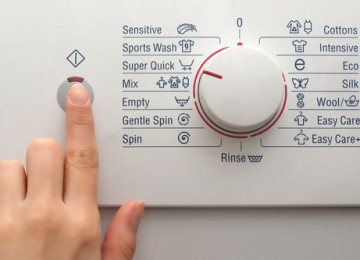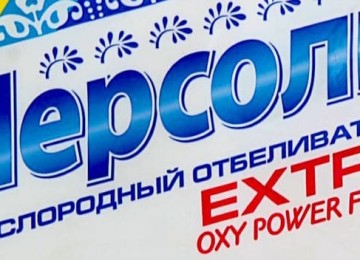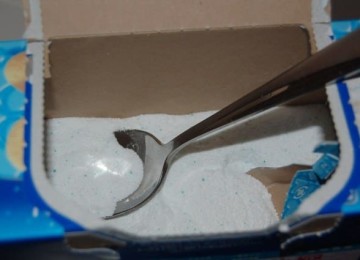 As a rule, manufacturers do not recommend using SMA for cleaning shoes. But consumers have already managed to make sure in practice that such an operation is possible if certain requirements are met. And now, to the question of whether it is possible to wash shoes in an automatic washing machine, users give a positive answer. In addition, to facilitate the process, manufacturers of washing machines have launched the production of machines with a corresponding program.
As a rule, manufacturers do not recommend using SMA for cleaning shoes. But consumers have already managed to make sure in practice that such an operation is possible if certain requirements are met. And now, to the question of whether it is possible to wash shoes in an automatic washing machine, users give a positive answer. In addition, to facilitate the process, manufacturers of washing machines have launched the production of machines with a corresponding program.
The peculiarities of the mode are that the drum rotates at low speeds, and spinning and drying are completely excluded. The machine will perfectly clean dirt from the surface of slippers, while the process will not threaten the device itself with unpleasant consequences.
Is it possible or not?
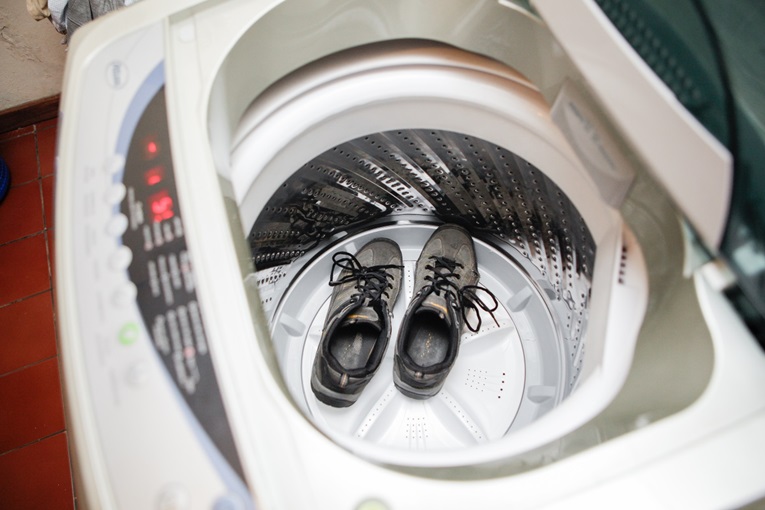
We are ready to take a risk, but another disturbing question appears in the subconscious - for which products such a process is possible, and which ones are better not to wash in a washing machine? An experiment is an interesting thing, but few people would dare to risk a pair of favorite sneakers because of this. It is difficult to say with certainty that washing of certain types is allowed, since any product can be subjected to the deformation process.For this reason, it is recommended to carefully examine your product before washing:
- When there is a label with a certain set of information, it will be much easier to deal with washing. The second option is to go to the manufacturer’s website and study the care requirements.
- It is necessary to take into account the material from which the product is made. For example, textile shoes can be safely subjected to this procedure
- But for suede shoes, water procedures are strictly contraindicated.
- Inspect your belongings carefully. If you see that the boots are glued together and do not have stitched seams, it is better to abandon your idea. In this case, washing will end sadly, because under the influence of moisture and temperature, the product will shatter into its component elements.
- Insert elements made of metal or artificial leather will most likely deteriorate in appearance. The metal will begin to become covered with corrosion spots, and cracks will form on the leatherette. Externally, such shoes will look unattractive.
In the washing machine, shoes will get rid of dirt much faster and better, and you will also save your time.
Remember that any textile products will withstand this procedure best, but leather shoes should be cleaned by hand. After a washing machine, it will shrink and lose its external qualities.
Suede also reacts strongly to damp environments and can be thrown away after washing.
Refuse to machine wash shoes whose quality is slightly questionable. As a rule, versions of products from China are made with a cheap adhesive composition, which ceases to hold after washing.
In addition, it is prohibited to wash all winter and autumn clothes, shoes with various decorations, damaged items, and products made from low-quality materials.
Preparatory activities
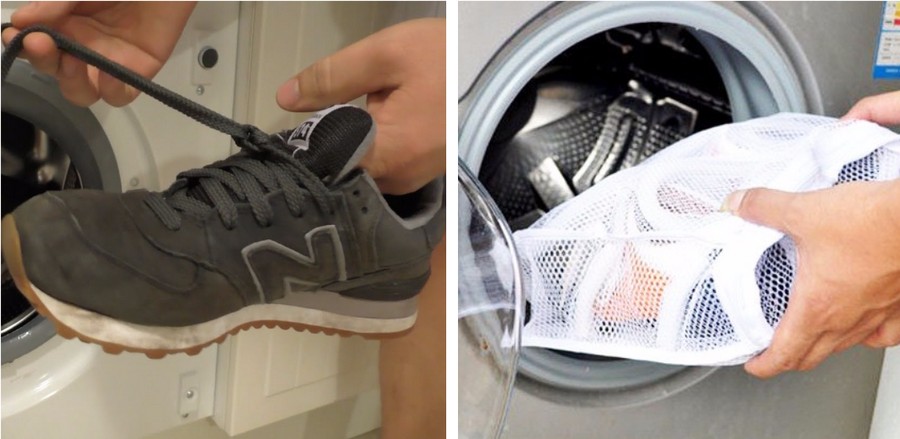
Once you know how to wash your shoes correctly, you shouldn’t immediately put them in the drum. This can not only lead to negative consequences, but also damage the machine itself. So the process should be approached carefully and quite consciously.
Before washing, shoes require protection from unnecessary stress caused by the rotation of the drum. At the same time, it would not be superfluous to think about protection for the rotating element itself, since bulky and heavy boots with hard soles will knock on it. There have even been cases of imbalances occurring during washing. The problem is easily solved - sports shoes or other products are immersed in a special bag, then the desired mode is selected.
Remember that ordinary slippers can be washed in a simple way, but other products made from dense materials are recommended to be washed only in a bag. First, the shoes are washed from dirt, laces and other metal parts are removed. Insoles are no exception - they are always washed separately.
A shoe washing bag can be purchased at a sporting goods store or ordered online. As a last resort, you can use an old pillowcase.
How to wash shoes correctly
Having completed all the preparatory steps, we place the bag of shoes in the washing machine drum. By the way, if your shoes are very dirty, it is recommended to soak them first.
Remember that you should not wash several pairs of shoes at the same time. Two is an extreme case.
Close the machine door and add powder. By the way, in this case it is more convenient to use liquid compositions, which are better rinsed.Many people praise the membrane product, using it when washing shoes and clothes. A special product is sold in sporting goods stores for sports shoes. In extreme situations, use regular powder, just don’t use too much of it.
Now you need to decide on the choice of program. The best solution is a special function for washing shoes, but it is only available in new SMA models. Therefore, set the “delicate mode” so that the shoes are washed “softly” without damage.
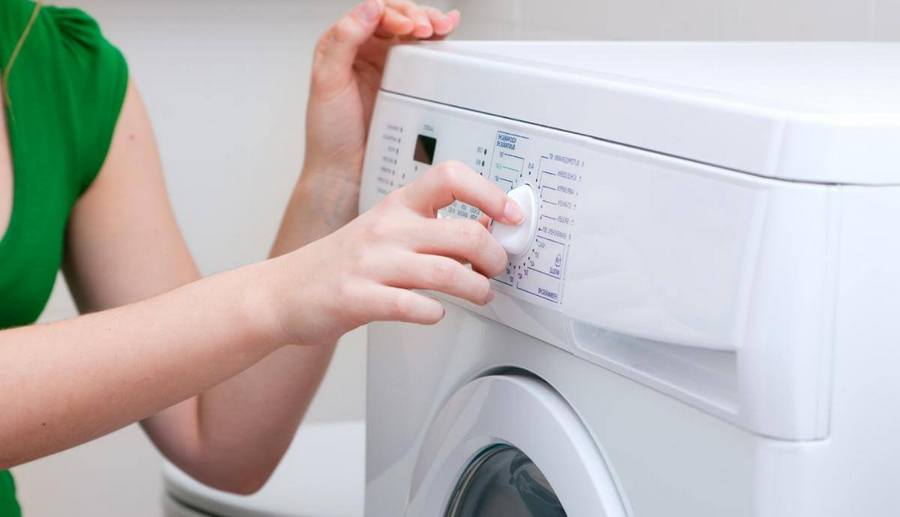
The water temperature during washing should not exceed forty degrees Celsius, and this is one of the main conditions. Avoid spinning and drying. Push-ups at high speeds and drying can ruin your shoes. In addition, damage to the machine itself is possible.
All that remains is to activate the process and wait until the machine copes with the task. Remember that when washing, the shoes will begin to hit the drum, making loud noises. There is no need to worry about this.
Drying rules
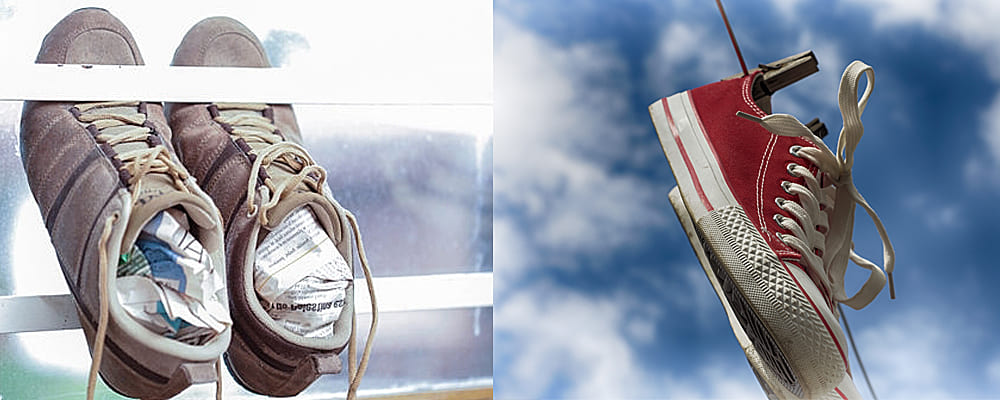
This is another important feature. Remember that you should not place shoes on a radiator or in direct sunlight to dry them. High temperatures can cause it to become unstuck or deformed.
You should put as much white paper inside as possible to give the shoes the desired shape. It is prohibited to use printed and glossy products so that the font and pictures do not transfer to the internal surfaces of the material.
It is best to use a balcony for drying. It is well ventilated, the air has a positive effect, speeding up the process.
Upon completion of the process, it is recommended to treat the product with a moisture-protecting compound, which can be purchased at any shoe store.
Dirt remains after washing - what to do?
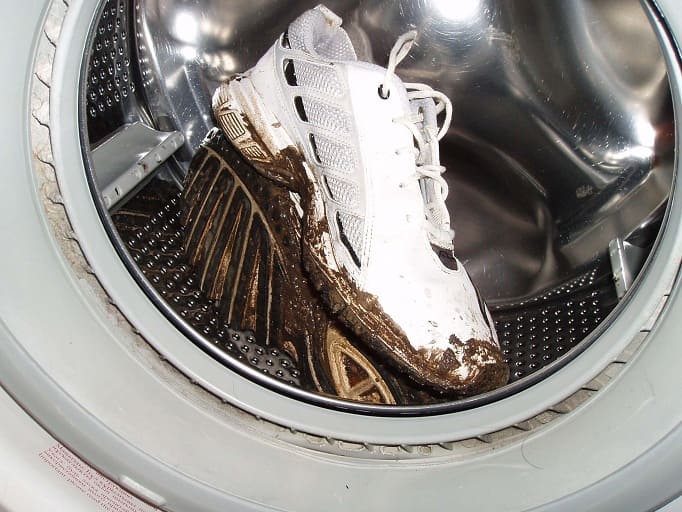
What to do if the expected result is not achieved? You will have to organize stain removal using the old proven method - “manual”.
Experts advise treating all difficult stains by hand before washing in a machine so that they disappear completely during the process. But it often turns out that we find out exactly about such stains after washing our shoes in the machine.
In most cases, washing in warm water strengthens complex stains and makes them much more difficult to remove. But you should try to get rid of them. There are several reliable methods for this:
- The detergent used to wash dishes helps remove traces of machine oil. It is applied to the contaminated area, left for 24 hours, then the shoes are sent to the machine;
- Ammonia and soap for household needs help remove dirt from green grass. A tablespoon of ammonia is poured into a glass of warm water. Rub the contaminated area thoroughly with this mixture. After this, the grass stains are treated with soap, and the shoes can only be washed in the SMA;
- Turpentine diluted with water in a 1 to 1 ratio perfectly removes soot from the surface. The composition is applied to the stain and rubbed with a cloth. After this, washing is performed;
- White spirit works great for paint removal. Wipe the shoes with a rag soaked in it until the stains disappear.
It should be remembered that the repeated washing process for shoes is a serious challenge. For this reason, difficult stains should be dealt with in advance.
We wash shoes by hand
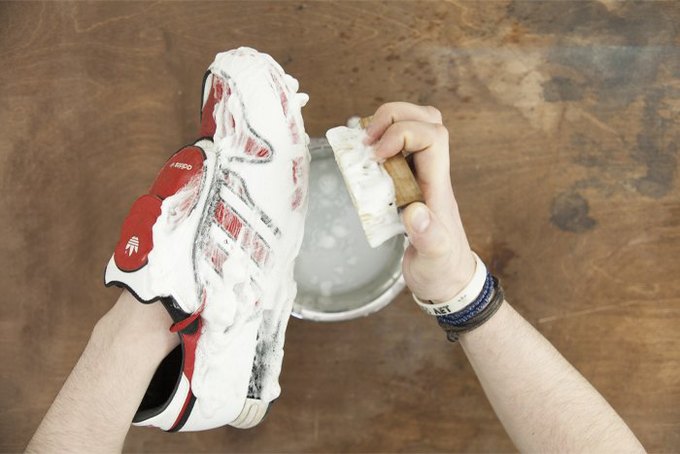
First, make sure that water treatments for shoes are not prohibited.It is better to clean natural or artificial leather, suede and nubuck with special foams or wipe with moistened wipes.
Moccasins, textile ballet shoes, synthetics, and sports shoes are also suitable for hand washing. Clean them as follows:
- the liquid composition for washing is diluted in water, the temperature of which is forty degrees;
- the shoe surface is soaked for about twenty minutes to increase cleaning efficiency;
- then the water must be drained;
- a new solution is prepared according to the specified recipe;
- Using a toothbrush, the surface of the shoe is treated on both sides until the dirt disappears;
- All that remains is to rinse and send the shoes to dry.
Remember that you need to rinse your shoes thoroughly so that no streaks remain after drying.
We share the secrets of mastery
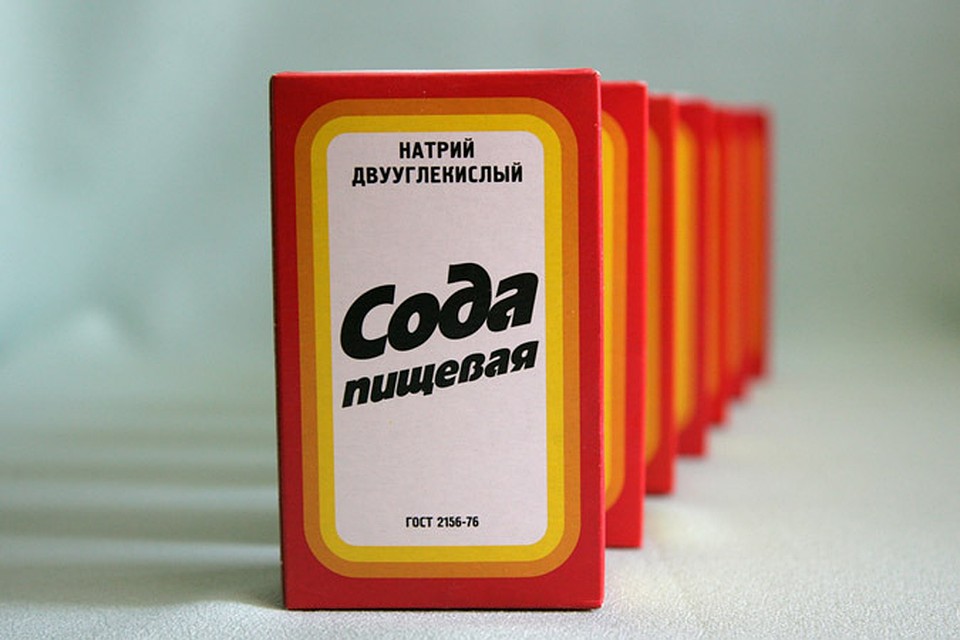
To ensure that the shoe washing process is effective, it is recommended to use Calgon or its equivalent. For example, simple soda will do. Such products will soften the water, which will have a beneficial effect on the final result.
It has already been noted that it is not recommended to wash suede material. But when your shoes have separate inserts made of such material, then one washing cycle will not do any harm.
After the water procedure, is there an unpleasant odor left in your shoes? Arm yourself with a napkin or cloth soaked in ordinary vinegar and wipe the inside of the product. All that remains is to air out the shoes to get rid of the vinegar aroma. If the product is membrane, then it is better to refuse such an experiment.
Persil will help you with severe injuries.This gel should be applied to dirty stains, wait about ten minutes and place the shoes in the drum of the washing machine without rinsing off the cleaning agent.
Remember that such items should not be washed frequently - excessive loads will shorten the wear period.
Sports shoes that did not wash off once can be spun in the drum again. For light-colored materials, it is recommended to use bleach without adding chlorine, for example, powdered oxygen options. The sneakers are simply soaked in warm water, and a bleach mixture mixed with water until they form a paste is applied to their surface. After a few hours, the product is wiped with a brush and sent to the SMA.
Traditional methods

Combine baking soda and liquid soap or dishwashing detergent. The mixture should resemble sour cream in consistency. It is applied to contaminated areas, waited for several hours, then treated with an old toothbrush and water. After washing the material, check the result of your work. If necessary, the process can be repeated. After washing, it requires drying in compliance with all rules.
The second cleaning option is a solution of soap and table vinegar. The components are combined, applied to the surface, after a few hours the dirty areas are wiped with gauze soaked in water with a vinegar content of 1 to 1. If you need to repeat the procedure, there will be nothing wrong with it.
There are several dry cleaning methods:
- White toothpaste is applied to the surface of the light material. The treatment must be carried out until the yellowish spots disappear. Now all that remains is to rinse the material with a sponge and dry it.
- With gauze soaked in ammonia, the contaminated areas are applied to the surface.
- Mix lemon juice, vinegar and three percent peroxide. All ingredients are taken in equal proportions. You are allowed to add one spoon of washing powder. Rub the mixture onto dirty spots and leave the shoes alone for a few minutes. After this procedure, a thorough rinse is performed. This is a very important process, as the peroxide may leave yellow stains.
If in your case none of the methods gave a positive result, purchase a special coloring composition at a hardware store. It is sold in the form of powders or sprays. Just before application, you must carefully study the recommendations from the manufacturer.
Conclusion
The shoes are easy to wash. Just use special bags and high-quality formulations that do not contain bleaching additives and have a softening effect on the product. By following all the recommendations, you will give your “little friends” a second life.







